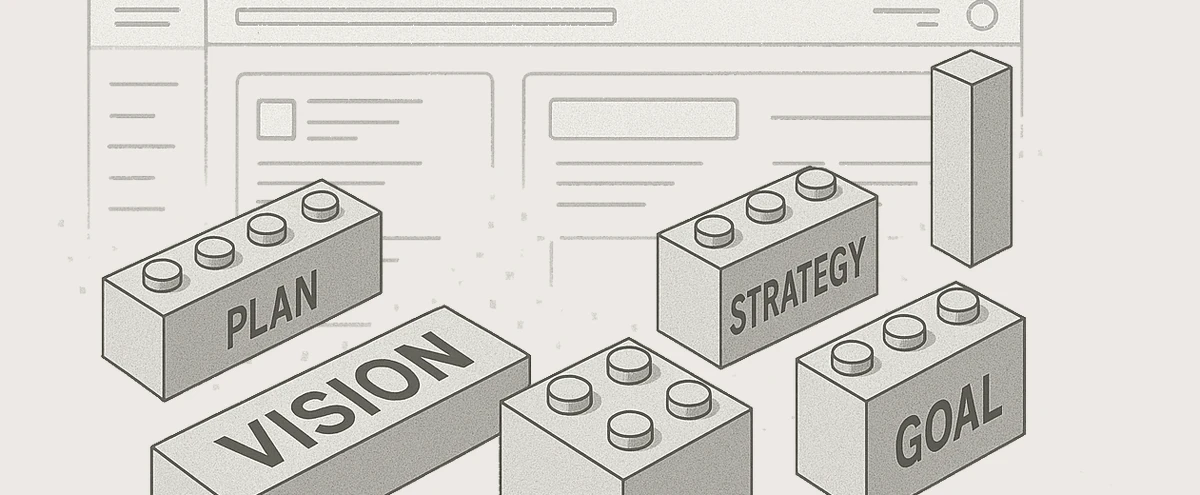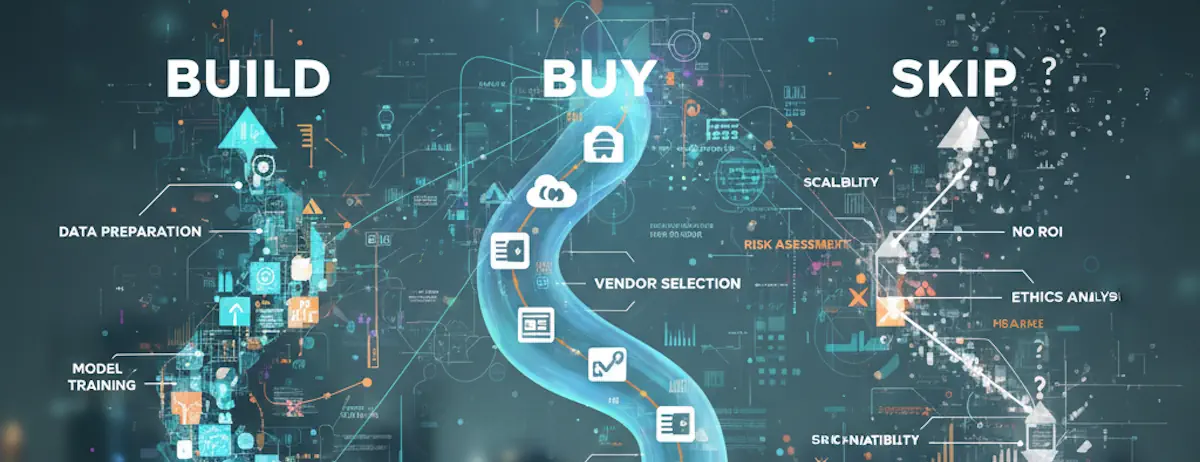From Skyscrapers to Bricks: Actionable Simplicity
Breaking down long-term visions into testable, scalable actions.

You’ve spent months crafting the perfect long-term strategy. The board loved your ambitious vision. Your strategic roadmap is comprehensive, innovative, and forward-thinking. But when you sit down Monday morning, one question haunts you: What specific action does your team take today to make any of this real?
You’re not alone. While you’re architecting the future, your competitors are shipping incremental improvements every quarter.
The $40 Million Question
The strategy-to-execution gap isn’t just frustrating—it’s financially devastating. Research shows that executives lose 40% of their strategy’s potential value to execution breakdowns. For large organizations, that’s not abstract inefficiency—it’s millions in lost revenue from missed market opportunities and wasted resources.
67% of strategies fail during execution, and the culprit isn’t bad strategy—it’s the handoff. The moment visionary leaders pass brilliant strategies to execution teams without translating the “why” into concrete next steps, value evaporates.
The problem isn’t that visionary planning lacks value. The problem is leaders create strategic masterpieces, then hand them off saying “make this happen” without answering the critical question: What’s the first testable assumption?
What Actionable Simplicity Actually Delivers
Actionable simplicity isn’t about dumbing down your vision—it’s about making complexity executable through clear translation. Research from Atlassian confirms that breaking large projects into smaller tasks helps teams “easily identify what step we should take next” and creates momentum through frequent wins.
The best strategists I work with have learned to bridge the gap between boardroom vision and Monday morning action by mastering three translation questions:
- What’s the smallest thing we can test this quarter?
- How will we know if our core assumption is valid?
- What scales if this small experiment succeeds?
Think about how Amazon approached cloud computing. They didn’t start with “We’ll dominate the cloud infrastructure market.” They started with “Our internal infrastructure problems need solving”—a concrete, testable challenge. AWS emerged from solving that specific problem well, then asking “What if we offered this capability to others?”
The Science of Strategic Chunk Size
But what exactly constitutes “actionable simplicity” when translating long-term visions into executable strategies? The research gives us clear guidelines for optimal strategic decomposition that aligns with both human cognitive capacity and business planning cycles.
Strategic Decomposition Framework
• Annual: Strategic validation cycles
• 3-Year: Adaptive planning horizon
• 1 core assumption: Per quarterly test
• Binary outcome: Clear success/failure metrics
Quarterly initiatives testing 1 key assumption with 3-5 interconnected strategic elements
This framework combines Miller’s research on cognitive chunking limits with strategic planning research showing that one-year planning cycles with quarterly validation points optimize both agility and accountability. McKinsey’s Three Horizons framework confirms that organizations need different time scales for different strategic purposes, with most successful strategy execution happening in 1-3 year cycles.
Some strategic thinkers have valid arguments against decomposition approaches. Systems thinking research warns that “reductionist perspectives oversimplify by isolating events and elements, losing context.” Healthcare studies show that fragmentation can lead to “well-intentioned actions that sometimes have the unintended consequence of making things worse.”
We’re not advocating for fragmenting your strategy into disconnected pieces. We’re advocating for maintaining coherence while creating executable experiments. The quarterly initiatives remain connected to your long-term vision—they’re not standalone tactics.
Breaking Down Strategic Handoffs That Actually Work
The most effective strategy leaders I’ve coached follow a consistent pattern when translating vision into action:
Start with the critical assumption. Every ambitious long-term strategy has one make-or-break assumption. If customer behavior doesn’t shift as predicted, if the technology doesn’t develop fast enough, if regulation doesn’t evolve as expected—the whole strategy crumbles. Test that assumption first with the smallest possible experiment.
Create learning milestones, not arbitrary checkpoints. Studies show that tasks with clearly defined milestones have a 75% higher completion rate. But effective milestones aren’t just calendar dates—they’re moments where you learn something valuable about your strategic direction. Each milestone should either validate an assumption or provide data that improves the next experiment.
Apply the strategic chunking principle. Research on strategic planning cycles shows that annual planning provides strategic direction while quarterly execution cycles prevent “plan whiplash” from constant changes. Each quarter should test one major strategic assumption with 3-5 interconnected elements—complex enough to generate meaningful market learning, simple enough to evaluate clearly within 90 days.
Design for intelligent failure. When Bain research analyzed successful strategy execution, they found that top-performing companies use a “Decide-Do/Refine-Do” approach rather than traditional “Plan-then-Do” methods. If a quarterly experiment fails, the team should understand exactly why and what to test differently. If it succeeds, there should be a clear path to scale the approach.
Communicate the golden thread. The handoff from strategy to execution breaks down when teams don’t understand how their daily work connects to the bigger vision. As I explored in “The Human Centered Product Leader”, successful leadership requires connecting individual contributions to meaningful outcomes. Every quarterly objective should answer: “If we achieve this, how does it validate or invalidate our strategic thesis?”
The Monday Morning Reality Check
Walk into any team meeting and ask, “What are you working on this week, and how does it connect to our long-term vision?” The answer should be immediate, specific, and enthusiastic—not a confused recitation of corporate objectives.
The most effective visionary leaders understand something crucial: they don’t need to know which stone the mason places next. They need to ensure they have the right mason, that the foundation being built will actually support their cathedral, and that they can spot when the work is accidentally creating a shopping mall instead.
Your role as a strategic leader isn’t to micromanage quarterly experiments—it’s to ensure those experiments are building toward coherent strategic learning. Can you see how this quarter’s work connects to next year’s capabilities? Are your teams building the right foundation for your long-term vision?
What’s the one assumption your long-term strategy absolutely depends on? And do you have the right people positioned to test it systematically this quarter?








